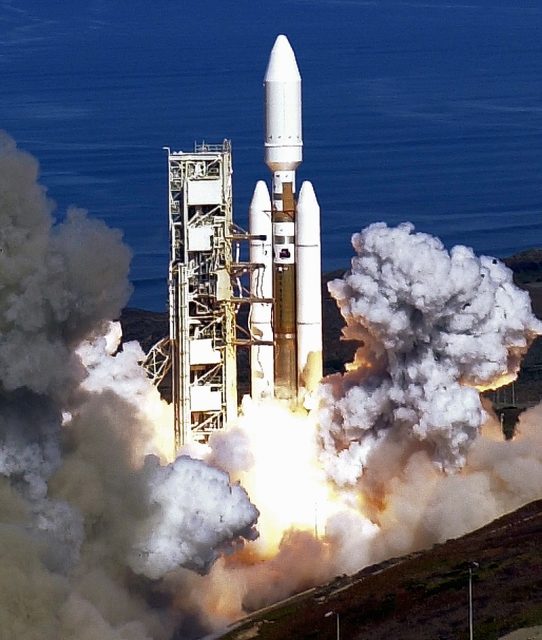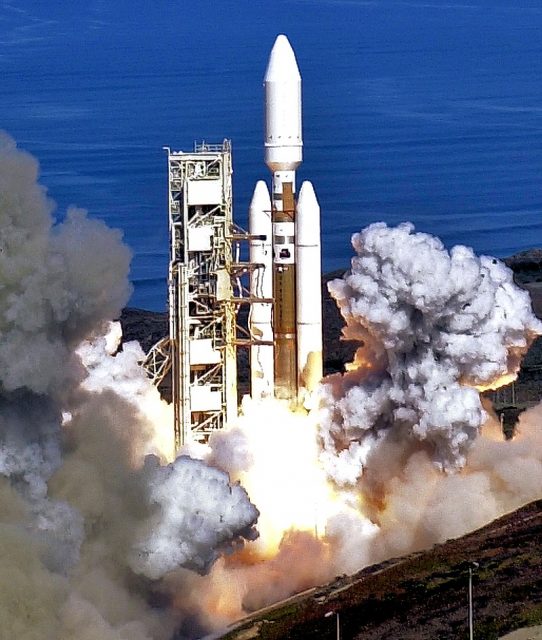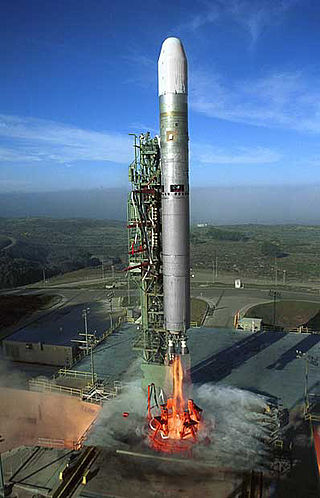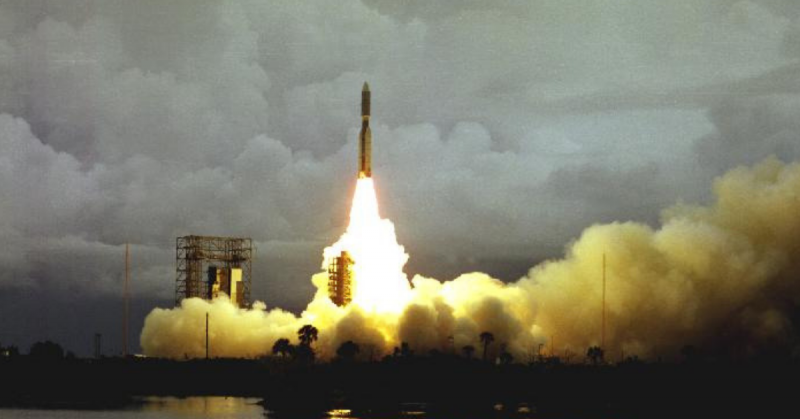In October of 2005, the United States Air Force closed a significant chapter in their nuclear book with the space launch of the last Titan IV out of Vandenberg Air Force Base (AFB), California.
The story of the Titan had first begun in 1959 as it stood on alert as a nuclear capable intercontinental ballistic missile (ICBM). First developed by the Martin Company, now Lockheed Martin, it was a two-stage, rocket engine with a nuclear warhead as its re-entry vehicle.
The Titan family of rockets included the Titan I, II, little known III, and the beast of a rocket, the Titan IV. The Titan II was more advanced than its predecessors, the Atlas and Titan I, specifically in the areas of fuel and ignition systems.

With a range up to 5,500 miles and the ability to carry a nuclear warhead, the Titan II was America’s sentinel at the height of the Cold War from 1963 until 1987. Titan IIs stayed on 24-hour alert at strategic places like Davis-Monthan in Arizona, Little Rock in Arkansas, and McConnell AFB in Kansas.
It was originally expected to stand guard for only seven years, but the capacity of this rocket made it a gatekeeper of the American dream for far longer. They were eventually replaced with the more advanced and multi-target strike capable Minuteman and Peacekeeper ICBMs.
https://youtu.be/DPdFQGyBsTo
Unprecedented Power for Its Time
In less than hour, the mighty Titan II rocket, armed with a W-53 9-megaton nuclear warhead inside the payload capsule, could bring about devastating destruction and dramatically change civilization as we know it. A single W-53 9Mt warhead would produce a fireball of death about 3 miles in diameter as well as a radioactive heat wave extending out to about 20 miles.

The blast effects would yield a near perfect fatality rate and almost all structures above ground would be obliterated. For comparison, one W-53 warhead was about 600 times more powerful than the atomic bombs dropped on Nagasaki and Hiroshima!
Thankfully for mankind, its service life as an ICBM came to a close without use. However, this warrior’s mission wasn’t completely fulfilled just yet. The Titan rocket family moved on to a new chapter: space launches, putting much-needed warfighter satellites into low earth orbits.

Rather than obliterate humanity, it then advanced humanity’s venture into the universe. The 2-stage Titan II rocket was refurbished, designated Titan 23G, and used to put small to medium payloads into a circular polar low Earth orbit. The system required very few changes to the previous rockets other than guidance, communication, and range safety packages and upgrades.
A New Mission for a New Era
There were a total of 25 successful space launches and only 1 failed space launch mission using the Titan II booster. That included all 12 of the Gemini capsules, with 10 of those being manned. Translate that success rate with nuclear warheads and the cockroaches somewhere might be alone reading this very article should the worst have taken place.

The last Titan II was launched from Vandenberg AFB in October 2003 and carried a payload for the Defense Meteorological Satellite Program, providing key weather data for American warfighters in the air and on the ground.
Following the stand alone success of the Titan II, the Titan IV continued mission success for the military and surveillance communities. The Titan IV evolved from the less well known Titan III, which was a modified Titan II with optional solid rocket boosters. Those boosters were used to make the Titan IV a heavy-lift satellite launch vehicle.

The Titan IV was the most powerful unmanned rocket system produced by the US, but was ultimately replaced by less expensive launch systems. A total of 39 Titan IV’s were launched from Cape Canaveral Air Force Station and Vandenberg AFB during its time of service between 1989 and 2005.
4 of those were failures, one of which included the entire rocket and payload system a mere 101 seconds after launch in 1993 at Vandenberg AFB Space Launch Complex-4 East.
A Legacy of Destruction to Exploration
It was the first failure after 6 successful launches, and the infamous event was made even worse as the USAF had invited the public and civilian media to cover the launch, only to watch it explode less than two minutes after lift-off. The booster would go on to have 17 straight successful launches before running into 3 failed missions at a cost of more than $1B. The program closed after the last 12 successful launches.

Both the Titan II and Titan IV served their country in multi-role capacities – as a nuclear deterrent standing guard over America during the Cold War, and as a critical launch booster for various Department of Defense satellite payloads.

Read another story from us: Hypersonic Missile Test by China Successful: Next Generation Tech
If you are travelling near Tucson, Arizona, stop in and see one of these historic giants as well as the silo from which it was launched at the Titan Missile Museum. The Titan II rocket displayed in the silo was an actual training missile but never contained any fuel, oxidizer, or nuclear warhead.
In Greek mythology, the Titans were greater than the Olympian gods, and these weapon systems definitely lived up to their name.
